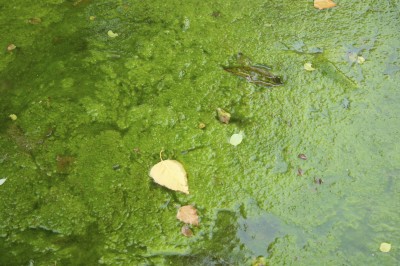






If your farm or backyard garden includes a pond, you may be wondering about pond scum uses, or whether you can use pond algae for fertilizer. Read on to find out.
Yes. Because pond scum and algae are living organisms, they are rich sources of nitrogen that break down quickly in the compost pile. Using pond scum as fertilizer also incorporates important nutrients, such as potassium and phosphorus, into the compost.
Spring is an ideal time for annual pond cleaning, and for making pond scum garden fertilizer.
The easiest way to remove pond scum is to use a swimming pool skimmer or a rake. Let excess water drain, then place the scum in a bucket or wheelbarrow. If the water is salty, rinse the scum with a garden hose before adding it to the compost pile.
To incorporate pond scum into a compost pile, begin with a 4- to 6-inch layer of carbon-rich (brown) materials such as straw, cardboard, shredded paper or dead leaves. Mix the pond scum with other nitrogen-rich (green) materials such as vegetable scraps, coffee grounds, or fresh grass clippings. Spread about 3 inches of this mixture over the brown layer.
Top the pile with several handfuls of regular garden soil, which introduces beneficial soil bacteria and speeds the process of decomposition.
Moisten the pile lightly with a garden hose and nozzle attachment. Continue layering brown and green materials until the pile is at least 3 feet deep, which is the minimum depth required for successful composting. The pile should heat up within 24 hours.
Turn the compost pile at least once every week, or whenever the compost begins to cool down. Check the moisture of the compost every two to three days. The compost is damp enough if it feels like a moist—but not dripping—sponge.
Pond scum compost is ready to use when it is dark brown with a crumbly texture and rich, earthy aroma.
There are several ways you can use the compost as pond scum fertilizer in the garden. For example, spread up to 3 inches of the compost over the soil just before spring planting, then dig or plow it into the soil, or spread the compost evenly over the soil as mulch.
You can also make potting soil for indoor plants by mixing equal parts pond scum compost with perlite or clean, coarse sand.
Copyright © www.100flowers.win Botanic Garden All Rights Reserved